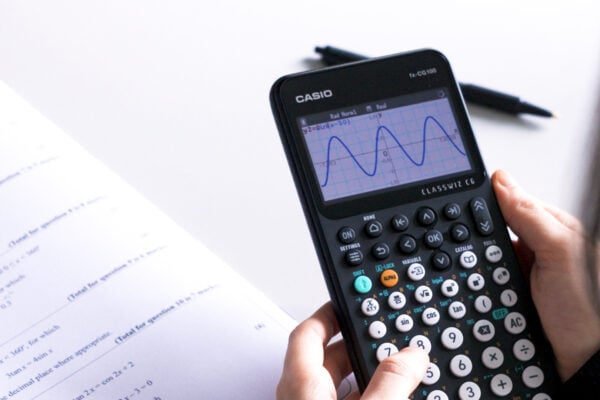Mathematicians who changed the world series: Katherine Johnson

Katherine Johnson was an American mathematician who famously calculated the flight-paths of spacecraft while working for NASA. Johnson achieved extraordinary things with her incredible mathematical knowledge.
Defying the odds that stacked against her
Johnson was born in 1918, in West Virginia, USA. Katherine Johnson was always brilliant with numbers. It became evident from a young age that she had a real talent for numbers. She was moved up several years in school after proving her mathematical skills.
In 1939, Johnson was already making positive changes. Johnson and two male students became the first black people to attend graduate school, at West Virginia State University. And, in 1952, Johnson found out that she could work for NASA at the all-black West Area Computing section. She got the job and worked there for many years. Following this, Johnson contributed to the department by tackling some incredibly complex mathematical concepts that helped to send astronauts up to space.
Ten years later, In 1962, the USA decided to send John Glenn around the world in a spaceship. Following this, he orbited Earth three times. This breakthrough couldn’t have happened without Johnson’s superhuman mathematical contributions to the project.
How did Maths make a difference?
NASA had some powerful computers which could control where the spaceship would go. Still, the astronauts didn’t trust the electronic calculating machines, as they would sometimes stop working or run into problems.
Therefore, Johnson would check the numbers by hand. Her mathematical knowledge was so well relied on and trusted that the mantra was “if she says they’re good, then I’m ready to go”. And, unsurprisingly, John Glenn’s trip around the world was a success!
Johnson’s Legacy
Following Johnson’s career with NASA, her extraordinary life didn’t standstill. Johnson spent the following years speaking to students about her incredible career, encouraging them to pursue STEM throughout their education. Johnson’s fundamental philosophy towards STEM subjects went “Some things will drop out of the public eye and will go away”. But, “There will always be science, engineering and technology. And there will always, always be mathematics. Everything is physics and math.”
As a black woman working for NASA in the 1950s and ’60s, Johnson overcame many social boundaries and racial discrimination. Johnson and her colleagues received mainstream recognition, with the publication of “Hidden Figures” (William Morrow and Co., 2016) by Margot Lee Shetterly and the release of the blockbuster movie of the same name. The release of “Hidden Figures” made Johnson one of the most celebrated black women in space science and a hero for those calling for action against sexism and racism in science and engineering.
Johnson was the first woman to co-write a research report in the Flight Research Division, where she worked, and she wrote and co-wrote 26 research reports. In 2015, she received the ultimate acknowledgement, when President Obama awarded her the Presidential Medal of Freedom.
Johnson proved that with determination, ambition and a drive to succeed; you can achieve great things no matter the odds stacked against you.



